By Morwenna Collett
8th March 2024
With the recent Swiftie fever that swept across Australia, part of what has come with it is a heightened understanding of the importance of providing good levels of accessibility at major events. An excellent array of accessibility features were provided for this tour, and quite rightly - when people are paying that much for tickets, everyone needs to have a good experience.
One of the accessibility highlights were the quiet spaces (sometimes called sensory or chill-out spaces) provided at the stadiums across Australia.There was huge demand and they were incredibly well utilised by many people who simply would not be able to attend a major event without access to a space like this. Here’s an inside peek of the Accor Stadium’s sensory space in Sydney (thanks to Tibi Access).
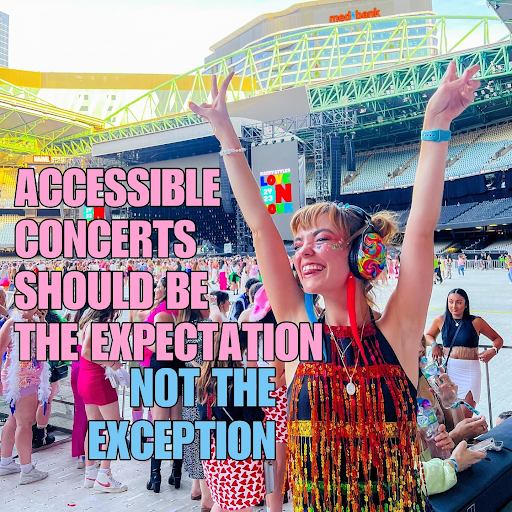

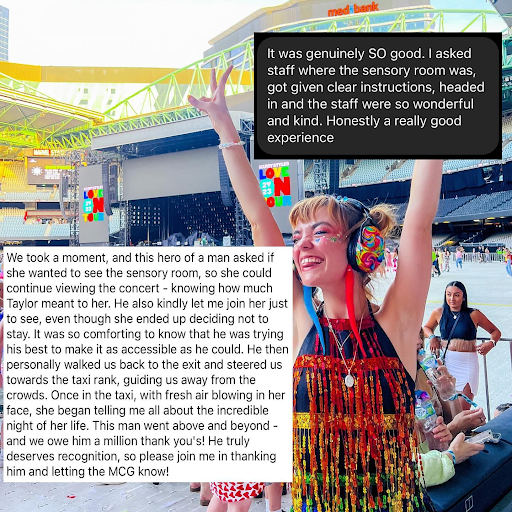
Last weekend, I took a leap of faith and took my neurodivergent 5 year old to his first Mardi Gras parade. Like many d/Deaf and disabled people, we did a lot of planning before the event - emails and phone calls to double check what was available, looking through their Visual Story so I could prepare my son for our visit. I must admit, I was skeptical - I’ve been to events where organisers have said they’ll provide access and I’ve gotten there, and it’s been sub par or not there at all. But we were pleasantly surprised and made it through two whole hours of Mardi Gras celebrations. The quiet space was in the accessible viewing area, and was a tent set up with bean bags, rug, toys and fidgets, headphones, earplugs, water - everything we needed to make our experience as comfortable and manageable as possible. The space was staffed by friendly team members from Aspect, who provided an exceptional level of customer service - even giving us a heads up before the Dykes on Bikes (very loud) were due to arrive so we could get our headphones sorted. It was wonderful to feel so included, and for us as a family to be able to introduce our child to an event like this in a safe and enjoyable way.

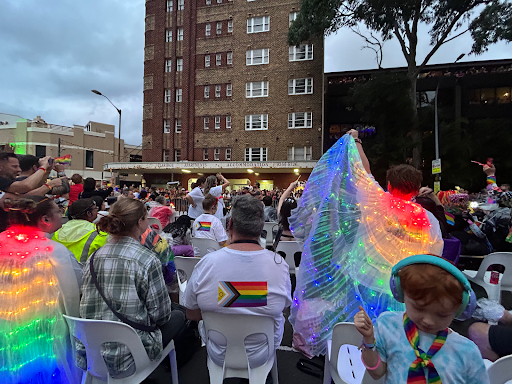
Why aren’t we seeing more quiet spaces?
As an Access Consultant working with a large range of arts and cultural organistions, venues and festivals, quiet spaces are not yet as embedded as we need them to be. Often ‘real estate’ and space can be limited in venues and to combat this, well-meaning organisations sometimes try to pair a quiet space with a multi-faith space, which doesn’t work because they serve very different purposes.
Who are quiet spaces for?
Quiet spaces are important for many different people - including those with neurodiversity (estimated to be between 30-40% of the Australian population), people with disability (18% of population), those with sensory sensitivities or chronic illness, children and young people, or anyone who just needs a moment to themselves. People can use them to decompress, to calm, to reduce overwhelm, to stim, to make noise and to chill.
Quiet spaces are important for your audiences, but also for your workforce,artists and other stakeholders. Without providing this kind of accessibility and reasonable accommodation, many people will simply not be able to engage with your organisation or event.
What does a quiet space need to include?
When developing a quiet space, it’s best to engage the community that uses these spaces for advice on what to include. While there’s not an exact science and it will be different for everyone, typically you might find quiet spaces include:
Low lighting, and anything else to create a calm environment (e.g. plants)
Soft furnishings, such as rugs, cushions, bean bags
A range of stim toys, fidgets and other calming activities (e.g. colouring)
Noise protection (ear plugs, ear defenders etc)
Water
Staffing to assist where needed
Sometimes a screen with live feed showing the event stage.
They can either be in a permanent environment (the same room in a venue for every event, so people get to know where the quiet space is) or set up temporarily (e.g. in a tent for an outdoor event). Setting up a quiet space doesn’t have to be hard or expensive, it can be as easy as a trip to Bunnings or an online shopping experience with $100.
What else do I need to do?
When an organisation is providing a quiet space, it’s important to let people know this in advance - ideally during the ticket sales stage, so people can make an informed decision about whether an event can work for them.
Quiet spaces are even more impactful when paired with other access tools and strategies, which can make attending an event easier for everyone. This might include:
Utilisation of the Sunflower Program (where people with non-visible disability wear a Sunflower Lanyard or wristband to identity that they may require extra assistance) and staff trained in this program
A Visual Story, which is a document with photos and words to help people prepare for their visit (see the Mardi Gras Parade Visual Story here)
A Virtual Tour, which is a pre-recorded video to show people a space before they attend (see the 107 Projects Virtual Tour here)
For large events or venues, an Access Familiarisation Day can be really helpful, where people can visit a venue prior to an event to get their bearings (see the one provided by Melbourne Cricket Ground ahead of the Taylor Swift concert here)
Excellent customer service with a human centered approach and disability confidence
Connection and engagement with the disability community.
The landscape is shifting around accessibility in Australia, with more and more of us identifying as being neurodiverse and having access requirements relating to sensory sensitivity - and with this, our expectations of organisations are increasing. In recent years, I’ve collaborated with a range of organisations who have introduced quiet spaces, and are now seeing more and more people use these spaces as word gets out.
As arts and cultural organisations, if we really want to engage with everyone in our community, we need to be providing quiet spaces and other accessibility measures consistently and as standard, so that everyone feels welcome and belongs.
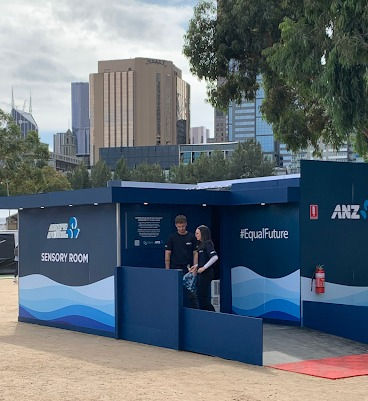
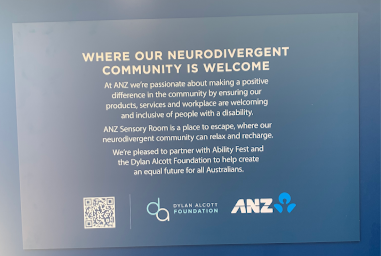
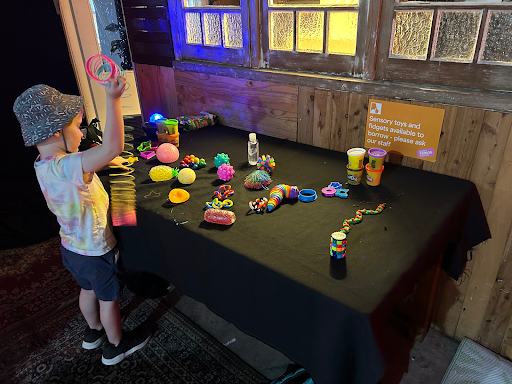

Comentários